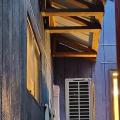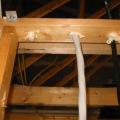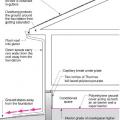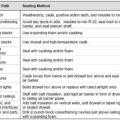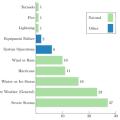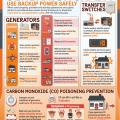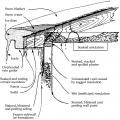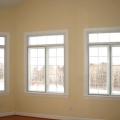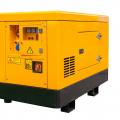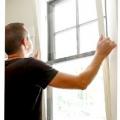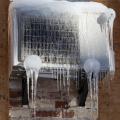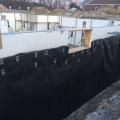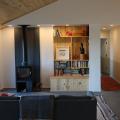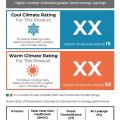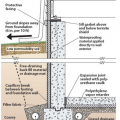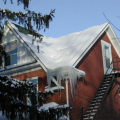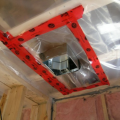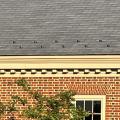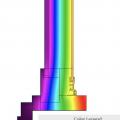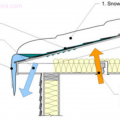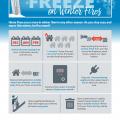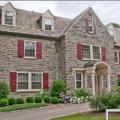Showing results 1 - 41 of 41
A permanent awning prevents snow and overflowing ice dams from causing damage to HVAC equipment below.
A properly sized cold climate heat pump can meet 100% of a home’s heating load in nearly any location in the United States
All holes through the top plates should be sealed with canned spray foam to prevent conditioned air from leaking into the attic.
Comprehensive above-grade water management details for a crawlspace foundation include a capillary break over the crawlspace floor, slope the surface grade away, installing gutters that slope away, and capillary break under sill plate.
Correct air sealing methods for common attic bypass air leakage paths.
Examples of many common ceiling penetrations that will be difficult to insulate and air seal in this cathedral ceiling.
Exterior low-e storm windows were added to historic Halligan Hall on the U.S. Naval Academy campus in Annapolis, Maryland; frames were custom colored to match the existing seafoam green window trim
Extreme weather, such as wind, fire, flood, or extreme heat (included in the Severe Weather category above) causes most large electric disturbance events in the U.S (defined as affecting at least 50,000 customers) (data from 2000-2016)
Ice dams form when warmth from the attic causes roof snow to melt and flow to roof eaves where it refreezes at the colder overhang and forms a buildup of ice causing more snowmelt to puddle where it can wick back through shingles and leak into the attic
Ice dams formed by melting of snow on roofs can affect roofs, walls, ceilings, siding, and insulation.
Installation of permanent exterior low-E storm windows is simple and easy, requiring a few basic tools and about 20 minutes of labor
Interior storm windows have very little impact on the appearance of the window, although the window frame may appear slightly wider
Lack of insulation over the top plate can lead to ice dam formation on a low sloped roof.
Modern interior storm windows include new technology and sleek design features that offer an easy-to-install, cost-effective method for upgrading the energy efficiency of existing windows
Modern Low-E storm windows are typically kept up year-round but can be removed without damage to the existing window frame, an important consideration for historic preservation projects
Modern low-E storm windows can significantly improve the energy performance of the home by reducing both air infiltration and thermal conductance through the window assemblies
Right - A dimpled-plastic geotextile mat covers the below-grade insulated concrete form (ICF) foundation to help keep water out of the foundation and to reduce hydrostatic pressure on the foundation during freeze-thaw cycles in winter.
Right - The high-efficiency wood stove is located on an interior wall in this home to provide a secondary heating source in cold climates.
The addition of low-E permanent exterior storm windows is typically accepted for most historic preservation projects
The Attachments Energy Rating Council (AERC) uses this label to indicate certified low-E storm window products.
The ENERGY STAR logo indicates products that have been verified to meet energy efficiency and performance criteria.
The goal of foundation moisture management is to construct the basement, crawlspace, or slab in a way that keeps moisture from getting in in the first place
The icicles and the bare spot along the left roof ridge indicate that heat from the second-story room may be heating the underside of the roof deck, melting the snow and likely leading to ice dam formation.
The polyethylene ceiling vapor barrier is sealed to form an air barrier around the exhaust fan in this very cold climate location (≥ CZ 6).
The ventilation space in this vented over-roof keeps the roof cool to prevent ice dams over the unvented attic
These interior storm windows have low-emissivity coatings to let in light while keeping out heat in the summer and keeping heat in in the winter
These snow guards help to keep snow from sliding off the roof and injuring people below.
This home has heat loss through the roof, leading to ice dam formation and structural issues during winter months.
This thermal image of an interior storm window shows how much temperature change occurs between the interior storm window panel on the right, at 50F and the existing glass on left at approximately 0F
Warm air that leaks into the attic through unsealed light fixtures or other bypasses can melt snow on the roof leading to ice dam formation.
When averaged over several years, more fatalities are caused by extreme heat than by any other weather-related hazard
Winter storms can cause power outages while prolonged winter weather can take a toll on building structures
With modern low-E storm windows, manufacturers offer many frame colors and the option for custom color matching
